Introduction to Document Management System Using SharePoint
What is a Document Management System?
A Document Management System (DMS) is an electronic system that helps organizations streamline their document management procedures. Specifically, a Document Management System Using SharePoint allows for
- Document Storage
- Document Retrieval
- Document Collaboration (Sharing)
- Document Tracking (Version Control)
- Document Workflow
- Document Editing and Dissemination
making it easier to handle information and data. This SharePoint DMS solution eliminates the need for physical storage facilities, saving money and space. It supports collaboration by offering a platform on which many users can work on documents simultaneously, ensuring that everyone has the most up-to-date information.
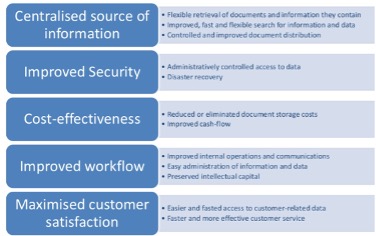
How Document Management System Using SharePoint is Effective?
DMS Solution Features
The SharePoint based DMS solution has the following features
- Improved SharePoint Site
- Document Storage
- Document Search Configuration
- Document Alerts Configuration
- Setup Online Editing of Office Documents
- Connect Document Library to Outlook or file expolorer
- Document Protection
- Major & Minor Versioning
- Configure Permission for Files & Folders
- Send Document to Options Setup
- Other Location
- Email Link
- Create Document Workspace
- Download a Copy
- Document Check Out/Check-In Type Configuration
- Document Permission Settings
- Organization Home Page with Web Parts
- Create Multiple Sites with Permission Settings
- Active Directory (AD) Integration
- Organization Directory Setup
- Organization Meeting Room Booking
- Organization Helpdesk Setup
- Advanced Search Configuration
- Document Controller Setup
- Customized Home Page with Required Web Parts
- Multilingual Optical Character Recognition (OCR)
- Document Workflow Setup
DMS as a Centralized Source of Information
Sample of SharePoint based Team Site design by Hashcron
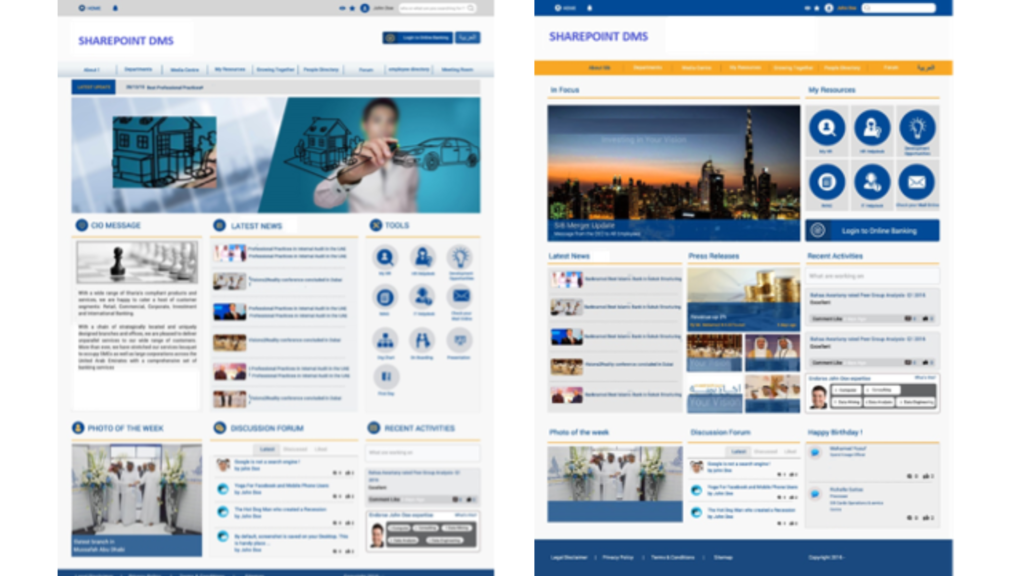
Easy Retrieval
Documents stored in a centralized system can be easily retrieved, providing quick access to important data. This eliminates the need to search several locations or physical files, saving both time and effort. The centralized system ensures that all documents are properly arranged and accessible with a few clicks.
Flexible Search
With a Document Management System using SharePoint, you can securely locate documents based on organization security policies and document classification (metadata). Advanced search features allow users to search for documents using keywords, dates, authors, and other metadata, making the retrieval process efficient and accurate.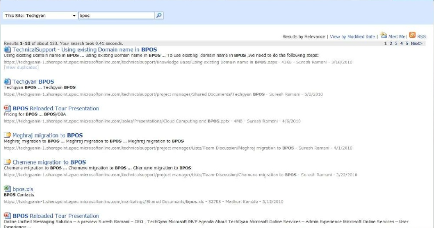
Administrative Control
Only authorized users with valid login credentials may make changes and retrieve information.. Administrators can assign permissions and roles to ensure that only the right people have access to sensitive documents. This control enhances security and ensures compliance with internal and external regulations.
Disaster Recovery
The system backs up all files electronically, protecting against physical damage. In case of a disaster, such as a fire or flood, the electronic backup ensures that documents are not lost and can be quickly restored. This feature is critical for business continuity and minimizes downtime.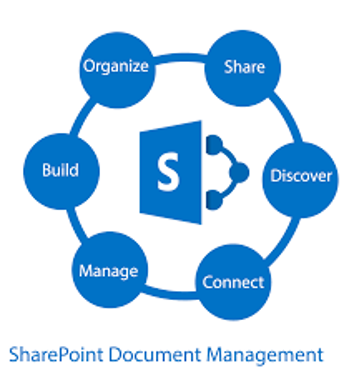
Features of Document Management System using SharePoint
Create Multiple Sites with Permission
You can create multiple sites with customized permission settings to enhance collaboration and security. Each department or team can have its own site, where members can collaborate on documents relevant to their projects. This segmentation helps maintain organization and security within the Document Management System using SharePoint.
Setup Workflow
You can set up workflows to automate processes, improving efficiency and reducing manual tasks. These workflows can include document approval processes, notifications for document updates, and automatic routing of documents to relevant parties. Automation helps reduce errors and ensures that tasks are completed promptly.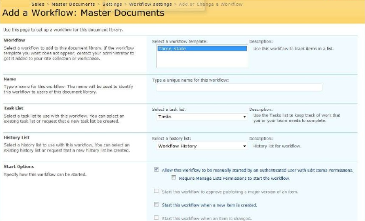
Setup Online Editing of Office Documents
Office documents can be edited online, facilitating real-time collaboration among team members. Team members can edit Office documents online, facilitating real-time collaboration. This feature enhances productivity and ensures that everyone is working with the most current version of the document.
Connect Document Library to Outlook
Integrating the document library with Outlook simplifies managing emails and documents. Users can easily attach documents from the Document Management System using SharePoint to emails and save email attachments directly to the document library. This integration streamlines communication and document management.
Document Alerts and Search
You can configure alerts for document changes, and a powerful search feature ensures you retrieve documents quickly. Users can set up alerts to notify them when documents are updated or accessed, keeping them informed of important changes. The search feature allows users to find documents quickly, using metadata and keywords.
Advanced Features of Document Management System Using SharePoint
Document Protection and Versioning
The Documents can be protected with major and minor versioning to track changes and maintain document integrity. Versioning ensures that users can see the history of changes made to a document and restore previous versions if necessary. This feature is essential for maintaining accurate and up-to-date records.
Configure Permissions for Files and Folders
Administrators can configure permissions at the file and folder level, ensuring that sensitive information is accessible only to authorized personnel. They can also set permissions to restrict access to specific documents or folders, enhancing security and control.
Send Document to Options
Users can send documents to other locations, email links, or download them as copies.. This feature provides flexibility in how documents are shared and distributed, ensuring that users can access documents in the format and location that best suits their needs.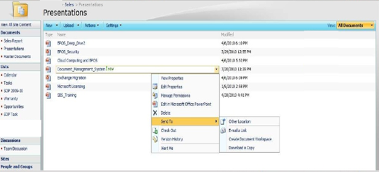
Document Check Out/Check-In Configuration
The documents can be checked out and checked in to manage document versions and prevent conflicts. This feature ensures that only one user can edit a document at a time, preventing simultaneous changes that could lead to conflicts or errors.
View RSS Feeds for Document Library
Users can view RSS feeds for the document library to stay updated with the latest changes. This feature allows users to subscribe to updates and receive notifications when documents are added, edited, or deleted.
Document Management System Using SharePoint: Setting Up Organization Sites and Workflows
Create Organization Sites
Creating sites for different departments or projects within the organization enhances collaboration and document management. Each site can be customized with relevant web parts, such as calendars, task lists, and document libraries, to support the specific needs of the department or project.
Setup Workflows
Setting up workflows automates document-related tasks, reducing manual effort and increasing efficiency. Workflows can be designed to route documents for approval, notify users of required actions, and archive completed documents. Automation guarantees that tasks are performed consistently on scheduled time.
Document Management System Using SharePoint: Connecting Documents to Outlook and Alerts
Connect Documents to Outlook
Integrating documents with Outlook ensures seamless communication and document management. Users can easily access documents from the Document Management System using SharePoint within their email client, attach documents to emails, and save email attachments to the document library. This integration simplifies the workflow and keeps documents organized.
Document Alerts
Configuring document alerts keeps users informed about document changes and updates. Users can set up alerts to notify them when documents are added, modified, or deleted, ensuring they stay updated with the latest information. Alerts can be customized based on user preferences and document importance.
Document Management System Using SharePoint:Powerful Document Search
Information Records Management (IRM)
Information Records Management (IRM) ensures proper management and retention of documents. It includes policies and procedures for ensuring the secured way to share and the people who has access only gets to see the required access on the document e.g. Read Only or Edit IRM features allows users to only view the document or edit respectively. IRM helps maintain the integrity and accessibility of important records based on the document permission set.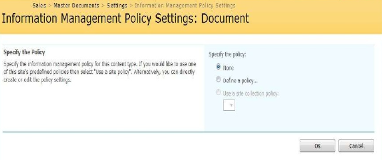
Document Versioning and Protection
Document versioning and protection features maintain document integrity and security. Versioning tracks changes to documents, allowing users to see the history of edits and restore previous versions if needed. Protection features include access controls, encryption, and audit trails to safeguard sensitive information. SharePoint has two version major and minor version and accordingly the setup can store these document. Also, the roll back to viewing of any previous major or minor version is very easy, even allowing to compare the two earlier versions of the SharePoint DMS.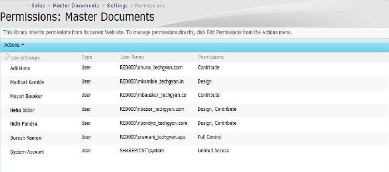
Document Classification and Metadata Search Indexing
Classifying documents and setting up metadata search indexing enhances document retrieval and organization. Metadata includes information such as document type, author, date created, and keywords, which can be used to categorize and search for documents. This feature helps users find relevant documents quickly and ensures that documents are organized systematically.
Document Management System Using SharePoint: Workflow Automation and Document Security
Workflow Automation
In a Document Management System using SharePoint, workflow automation streamlines business processes and reduces the need for manual intervention. Automated workflows can include document approval processes, notifications for document changes, and task assignments. This automation ensures that documents move through the necessary steps efficiently and consistently, reducing the risk of errors and delays.
Automating Approval Processes
Automation guarantees that tasks are done continuously at the scheduled time. Workflow automation routes documents to the appropriate approvers and tracks the status of approvals. This feature reduces bottlenecks and ensures that important documents are approved quickly.
Notification and Task Assignments
Workflow automation can also include notifications and task assignments, ensuring that team members are aware of their responsibilities. Notifications can alert users when documents require their attention, and task assignments can ensure that tasks are completed on time. This feature enhances accountability and improves efficiency.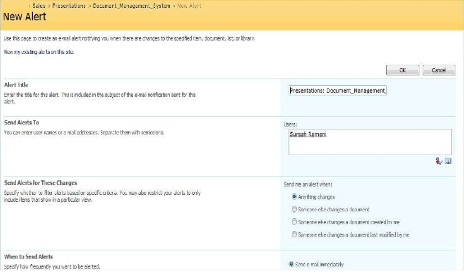
Document Security
It is crucial to ensure the security of documents in any DMS. SharePoint provides robust security features to protect sensitive information and ensure compliance with industry regulations. These attributes are control over access, encryption, and audit records.
Access Controls
Access controls ensure that only authorized users can view, edit, or manage documents. Administrators can set permissions based on user roles, ensuring that sensitive information is accessible only to those who need it. This feature improves security by lowering the chance of unwanted access.
Encryption
Encryption protects documents by encoding the information, making it unreadable to unauthorized users. SharePoint provides encryption for data at rest and in transit, ensuring that documents are secure from interception or tampering.
Audit Trails
Audit trails track all actions taken on documents, including who accessed, edited, or deleted a document and when these actions occurred. This feature provides a detailed record of document activity, ensuring accountability and helping to detect and respond to security incidents.
Document Management System Using SharePoint: Enhancing Collaboration and Communication
Custom Intranet Portals
Custom intranet portals can be created using SharePoint to enhance collaboration and communication within an organization. These portals can include features such as news feeds, discussion boards, and team calendars, providing a central hub for information and collaboration.
News Feeds and Announcements
News feeds and announcements keep team members informed about important updates and events. These features can be customized to display relevant information, ensuring that everyone stays up-to-date with the latest news and developments.
Discussion Boards
Discussion boards provide a platform for team members to share ideas, ask questions, and collaborate on projects. This feature enhances communication and allows for the exchange of knowledge and ideas within the organization.
Document Collaboration
SharePoint facilitates document collaboration by allowing multiple users to work on the same document simultaneously. This real-time collaboration ensures that everyone is working with the most current version of the document and can see changes as they are made.
Co-Authoring
Co-authoring allows multiple users to edit a document at the same time, with changes being saved and updated in real-time. This feature enhances productivity and ensures that team members can collaborate effectively, regardless of their location.
Comments and Annotations
Comments and annotations allow users to provide feedback and suggestions directly within the document. This feature facilitates communication and ensures that all feedback is captured and addressed.
Document Management System Using SharePoint: Ongoing Support and Maintenance
Continuous Improvement
Ongoing support and maintenance are essential for ensuring that the DMS remains effective and up-to-date. Continuous improvement involves regularly reviewing and updating the system to address any issues and incorporate new features and technologies.
Regular Updates
Regular updates ensure that the Document Management System using SharePoint is equipped with the latest features and security enhancements. These updates can include software patches, new functionalities, and performance improvements, ensuring that the system remains reliable and effective.
User Training and Support
Providing user training and support ensures that team members are proficient in using the DMS. Training sessions can cover various aspects of the system, including document management, collaboration features, and security protocols. Ongoing support ensures that users can get help with any issues or questions that arise.
Use Cases: SharePoint DMS for a Leading UAE Bank
The Bank enhanced the customer experience using complete DMS solutuon based on SharePoint DMS. From the time Customer Walks in to Bank to all they way to capture of documents, issue of Bank Account etc and document storage for central bank requirements are implemented seamlessly to enhance overal user productivity.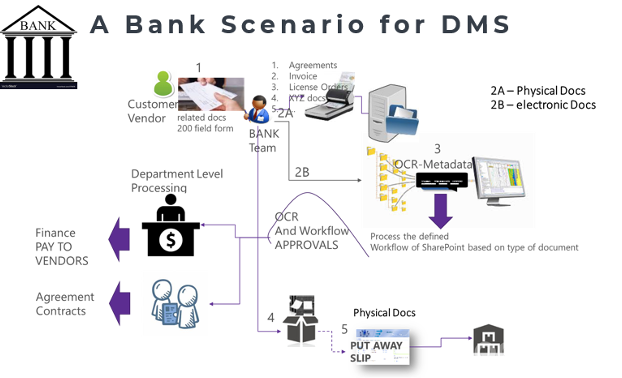
Conclusion
In conclusion, a Document Management System using SharePoint offers numerous benefits, including enhanced document management, improved collaboration, and robust security. By implementing a DMS, organizations can streamline their document-related processes, reduce manual tasks, and ensure that information is easily accessible and secure. With features such as workflow automation, document protection, and advanced search capabilities, a SharePoint-based DMS is a powerful tool for any organization.
By choosing the right DMS and providing ongoing support and training, organizations can maximize the benefits of their document management system and achieve long-term success. For tailored DMS solutions, consider hiring a SharePoint developer from a trusted provider like Hashcron Technologies, your expert in Microsoft domain solutions.





Pingback: Why Should You Hire a SharePoint Developer in 2024?